Koi carp are a very popular pond fish in the United States and throughout the world. Originating from Japan several hundreds of years ago, this colorful fish has captured the hearts of people worldwide. Many people are fascinated by this freshwater fish. If you are already one of these koi enthusiasts or new to it and thinking of setting up a pond or aquarium with koi, there may be some questions that are weighing on your mind: How big will my koi get? Am I taking care of the water correctly? How do I best grow my koi?
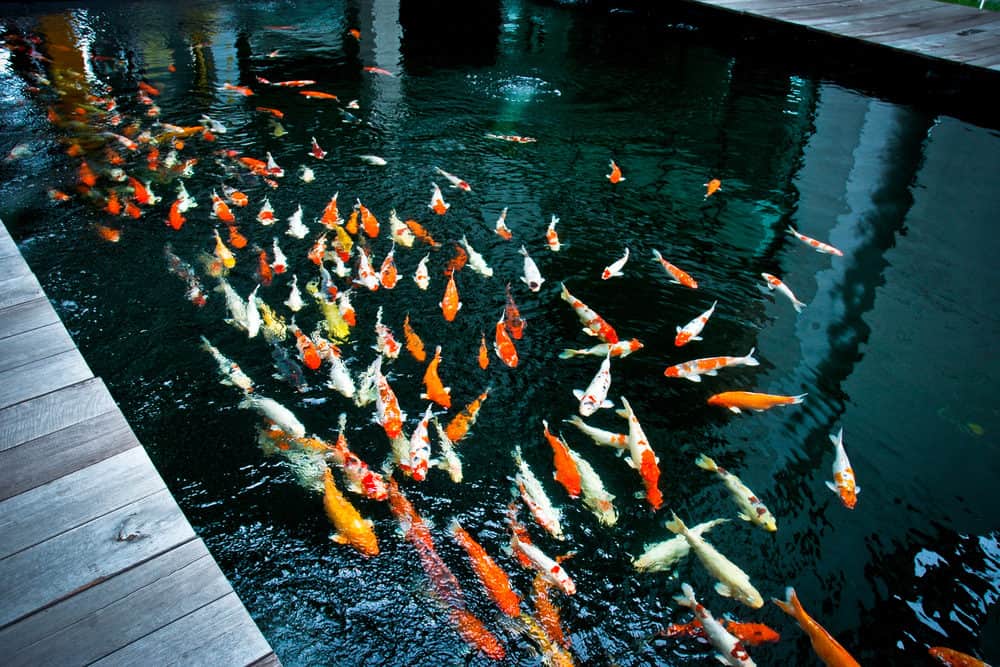
How Many Years Does it Take for a Koi Fish to be Fully Grown?
The growth rate of koi is dependent upon a number of factors, including the age at which they are introduced into their new environment. The average time taken for a juvenile koi to grow from one inch to two inches, or about half its total length, is around three years. This means that if you buy your first koi when they're just over an inch long, then by the time they've reached maturity, they'll be almost four inches long!
Koi come in different varieties and sizes, but most will achieve their maximum size in three years. This is considered a rapid growth rate for this fish as many types of koi can live as much as sixty years. Japanese koi tend to have the longest life span but may take a little longer than the typical time to reach full maturity. Western varieties will have a faster growth rate, but the koi life span is shorter.
Regardless of the variety of koi, they typically grow at similar rates - especially during their first year. The second and third year will vary by the quality of diet and nutrition as well water quality and care inside the pond or tank.
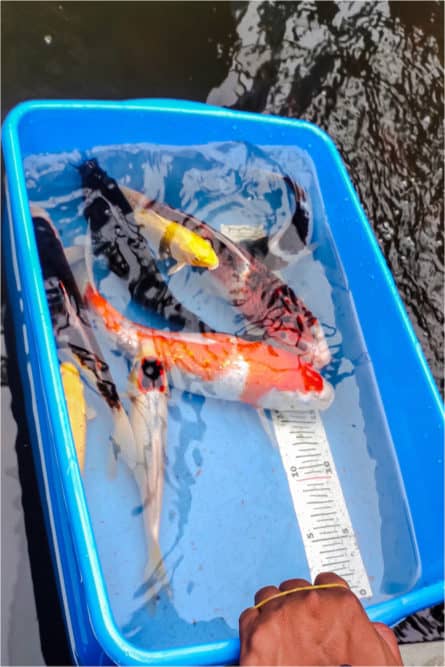
Will koi continue to grow to the size of the tank or pond they live in?
Japanese koi fish will not continue to grow to fit their environment. If a certain variety of koi is known to reach a maximum length - say 18 inches - it will not exceed that length regardless of the environment or diet provided. It will not get any bigger, just because it is in a large pond or tank. It doesn't matter if the koi environment is indoors or outdoors.
However, the koi rate of growth may be impacted by the environment they live in. Water temp, water quality, diet and pond size all factor into growth rate. Koi will grow faster when conditions are kept at a gold standard for the habitat. The better kept the environment, the better chance the koi maintain and long and healthy life.
Water Temperature: More Important than You may Think.
Believe it or not, the water temperature in your pond has a direct impact on the metabolism of your Koi. You can witness this in colder climates when koi go into a semi-hibernation (torpor) when your pond temperature hovers just above freezing.
Koi fish - like all fish - are cold-blooded and have no means to maintain or regulate their body temperature. They are dependent on their environment - the water that they swim in. The water temperature dictates their activity level.
Warmer water results in an increase in koi activity. This can kickstart their appetite, energy level, and even their growth rates. If the water temperature is too warm, that can cause some issues such as illness or stress on the koi.
If the water temperature is on the colder side, this will suppress the koi fish feeding and slow down their metabolism. This will result in reduced growth. If the habitat water temperature gets too cold, that could trigger a hibernation state for the koi, which in turn also reduces growth and feeding frequency. Hibernation may be a normal phase for your koi if they are in an area or climate with a cold season during the year.
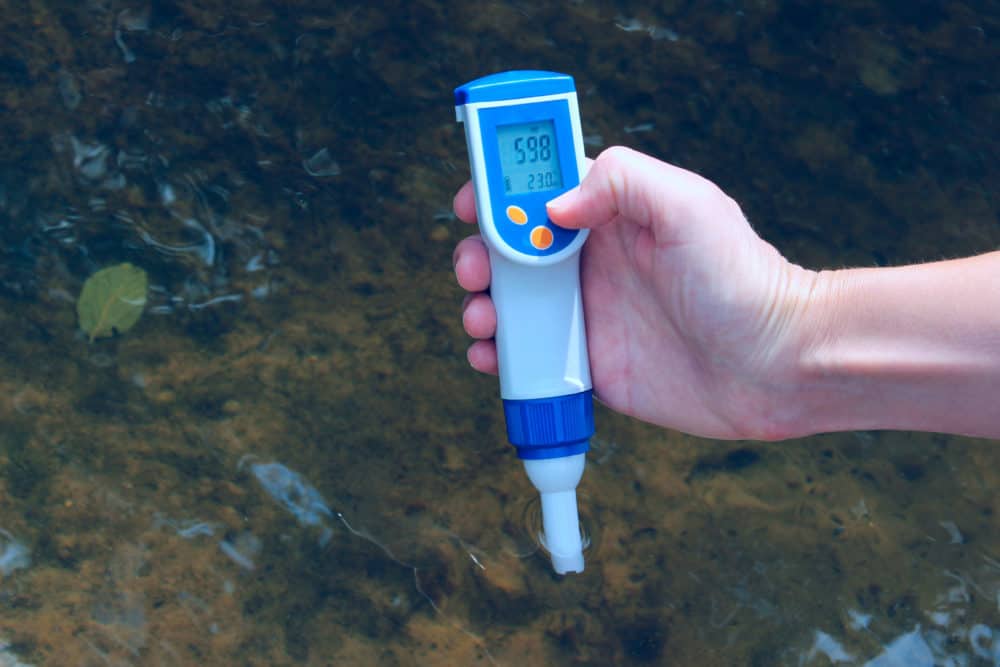
Keeping you water temperature at a consistent temperature around 75-80 degrees Fahrenheit or 24-27 degrees Celsius is the optimal spot for steady, consistent growth of your koi. Koi raised in the warmer parts of the United States and Europe tend to grow quicker than those koi sourced directly from Japan. Japanese koi breeders will allow the habitat temperature to drop during the winter promoting the koi to hibernate until a warmer season returns.
Indoor habitats are easier to keep consistent temperature. As a koi owner, indoor climate is easier to maintain. However, if you are growing your koi fish in outdoor environment, it may be a little more challenging. If the weather gets too warm, a koi owner can install a fabric shade over the area to help reduce the heat and direct sun on the pond area. Also, adding some plants can help to take the edge off the heat.
Top Factors of Ideal Water Conditions for Your Koi Fish Growth Habitat
As we have discussed already, the water temperature is a very important factor for the growth and health of your koi. There are some other factors that are a little more technical but need to be considered as well. Your water should be balanced with a variety of minerals. If sourcing water from a public water system or tap, make sure it gets distilled or treated with an agent to remove the chlorine.
Here are some other key factors to promote koi fish growth in your habitat:
pH level: Koi fish blood is on the alkaline side, so the water should be too. Keep the pH level between 7.0 and 8.5. Koi will get sick and can possibly die if the pH drops below 6.0.
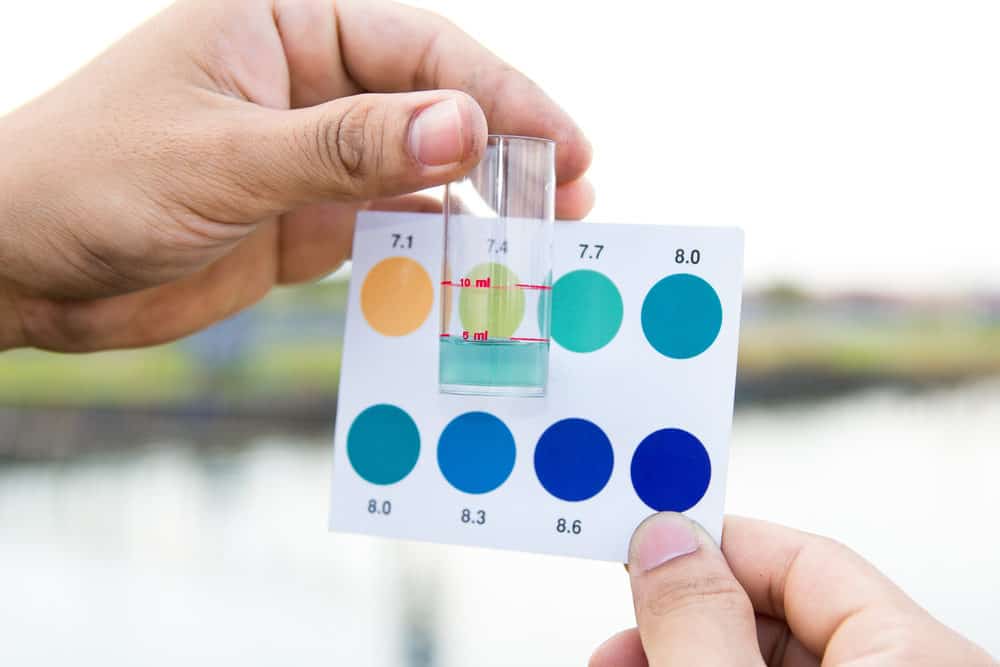
Ammonia: The ideal ammonia level is 0.00 parts per million (ppm). If it gets into a range of .010 - .015, this would still be tolerable as long the pH is kept at the lower end of the recommended range.
Salinity: The salinity level should be 0.1% or less. Koi fish are freshwater fish and a higher level of salt in the water can kill them. If you need to neutralize some toxins or control algae, use a small amount of pond salt as directed by the product.
Plants: As we previously mentioned, plants are good for the habitat. Plants increase oxygen and can also be a food source for some types of Koi.
These key items will help keep your koi habitat operating at a high level and your pond fish happy.
Top Reasons That Can Inhibit Koi Fish Growth And How to Take Action
Water Quality
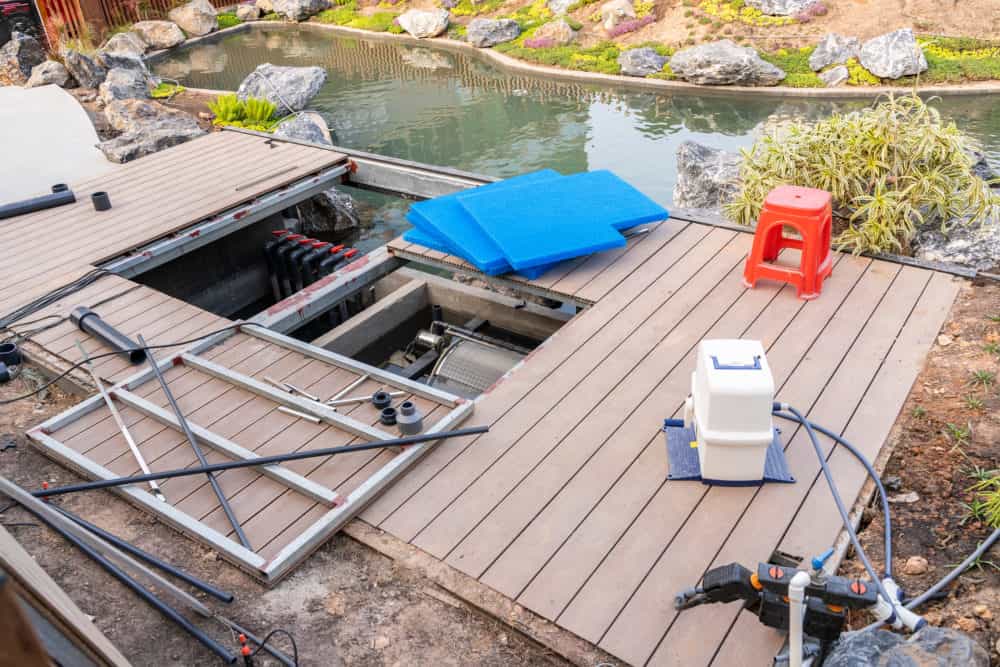
Bad water quality can destroy your aquarium or pond. The easiest way to prevent this is to stay on top of monitoring the water. You can do things such as testing with water test kit, conduct regular water changes, and making sure waste and other kinds of debris kept out.
Water Temperature
As presented earlier in the article, keeping the temperature at a consistent optimal range is the best strategy for your koi fish growth.
Overcrowding
Your Koi pond must be adequately designed and stocked to enhance the growth of your koi.
The last thing you want is an actual koi feeding frenzy in your pond with fish being physically aggressive towards each other. This can result in injury and perhaps even disease if the koi frequently bump up against each other. Overcrowding can lead to general stress for your koi.
There is also the issue of waste. Fish excrement and decaying plant matter both contribute to pond waste. If you have too many koi in your pond, the waste situation can get out of control. Waste matter creates excess carbon which can lead to a host of problems - including algae blooms - that create a less than ideal environment for your pond.
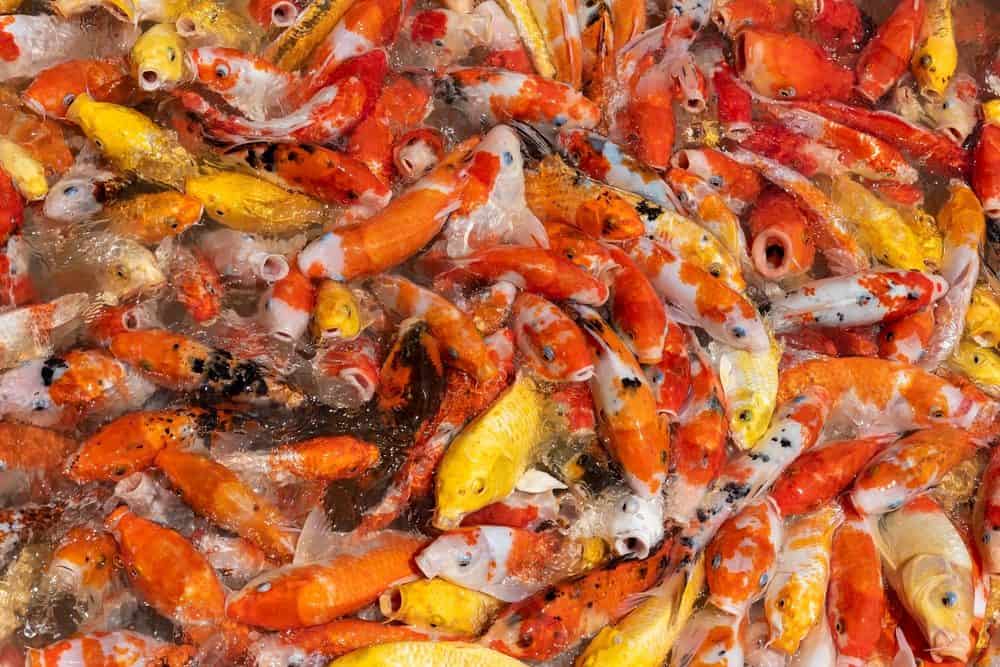
Healthy koi require a lot of room. The right pond environment will vary based on your location and the number of koi in your pond. Having fantastic aeration and a great filtration system is also essential to maintain koi health and promote growth.
Fish Pond Dimensions
Your koi pond needs to have room for your koi to breathe and get some exercise. If you want to have "fit" koi fish, they need room to swim short distances without being impeded. Not having enough room can impede their growth and negatively impact their health.
Koi pond depth is extremely important as well. While it obviously gives your koi an opportunity to exercise their muscles, it also provides them with additional protection from koi pond predators.
Poor Diet or Nutrition
The right type and the right quantity of food are crucial in koi development for healthy fins, eyes ,and tail. You're in charge of what your koi eat and can keep them from having poor eating habits. You should prevent feeding your koi low-quality foods. Carbohydrates, in particular, should be avoided as they can be very difficult for koi to properly digest.
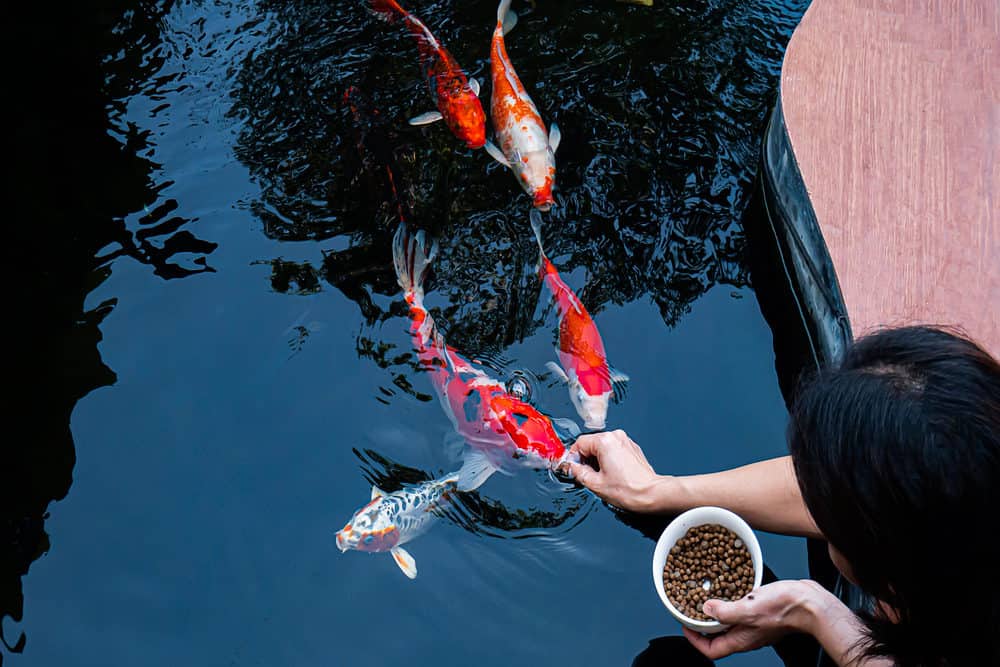
Your koi should be eating... koi food. While they can successfully digest many of the same foods that humans eat, they're used to dining on plant matter like algae - as well as pond insects. Your best strategy is to purchase koi food from a local or online koi retailer. They'll have food that is specifically engineered for the growth needs of your koi.
Be sure not to overfeed your koi. If you notice food is left in the pond after the koi are done eating, this can result in excess waste - and they may be eating too much. The same goes for cold weather. Generally, feeding should cease in the fall when the water temp drops below about 50 degrees farenheit.
Age and variety of your Koi
Koi grow most quickly during their first couple years of life. As koi age, the growth rate tends to slow down until they reach their maximum length.
The variety of your koi will also play a role in growth. Some koi varieties are known to be larger than others.

They may seem like a lot of effort to raise, but it will be well worth it for the pleasure koi fish will bring to your life. Your koi fish will bring you years of enjoyment!
There are many factors involved with raising healthy koi fish and promoting optimal fish growth. Some are in the koi keeper's control, such as water conditions, size of the fish pond or aquarium and proper nutrition, however, there are other variables that have a certain effect over the rate of koi fish growth, such as age and genetics, that determine whether a koi fish will be large or small.



